Hindenburg Line Worksheets
Do you want to save dozens of hours in time? Get your evenings and weekends back? Be able to teach about Hindenburg Line to your students?
Our worksheet bundle includes a fact file and printable worksheets and student activities. Perfect for both the classroom and homeschooling!
Resource Examples
Click any of the example images below to view a larger version.
Fact File
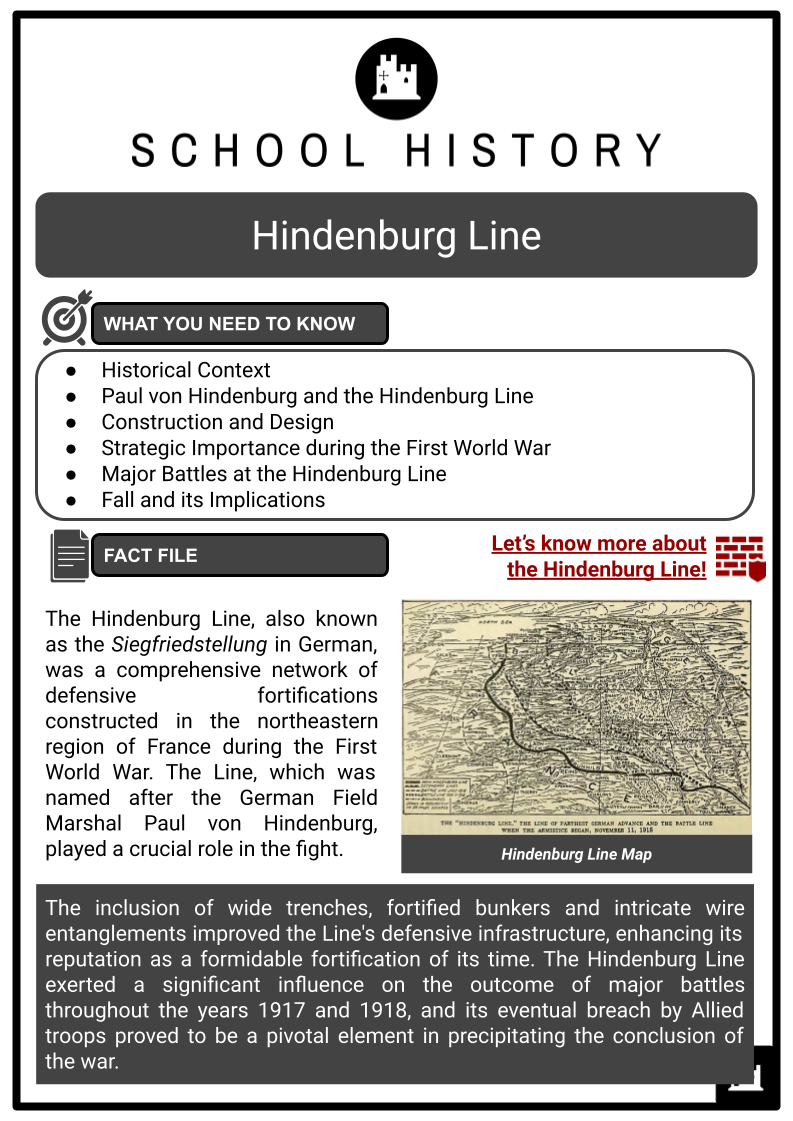
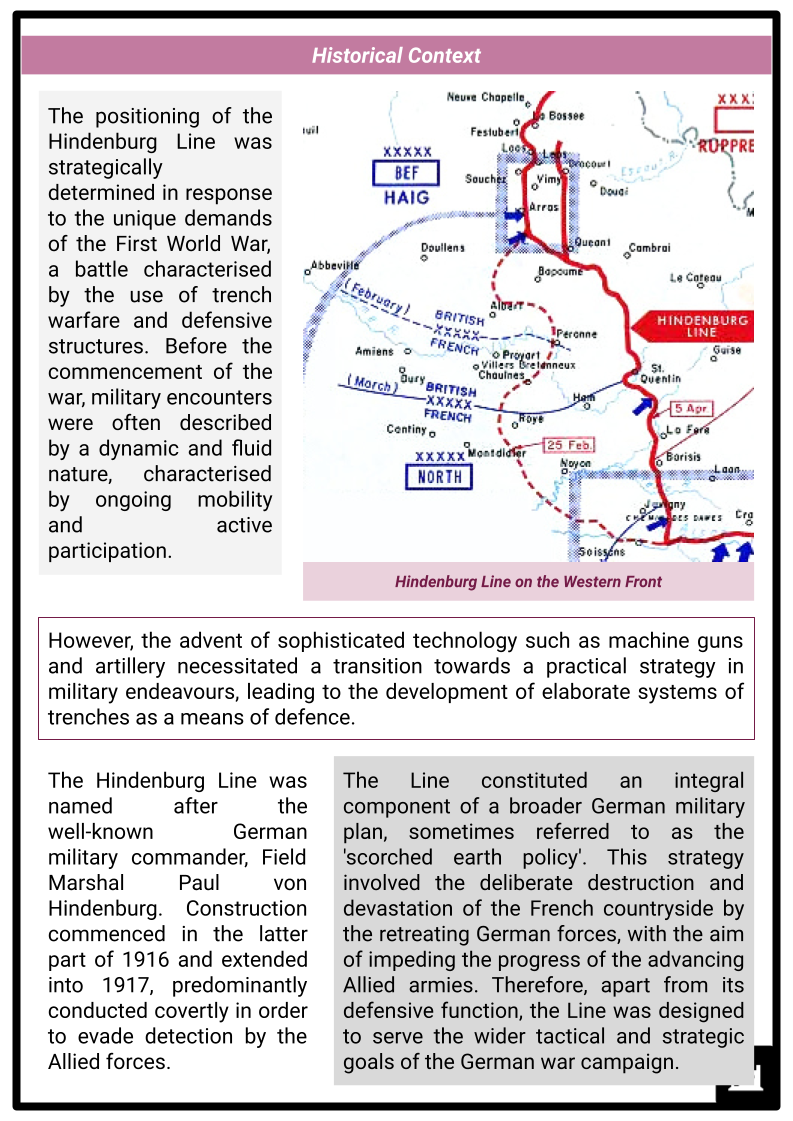
Student Activities
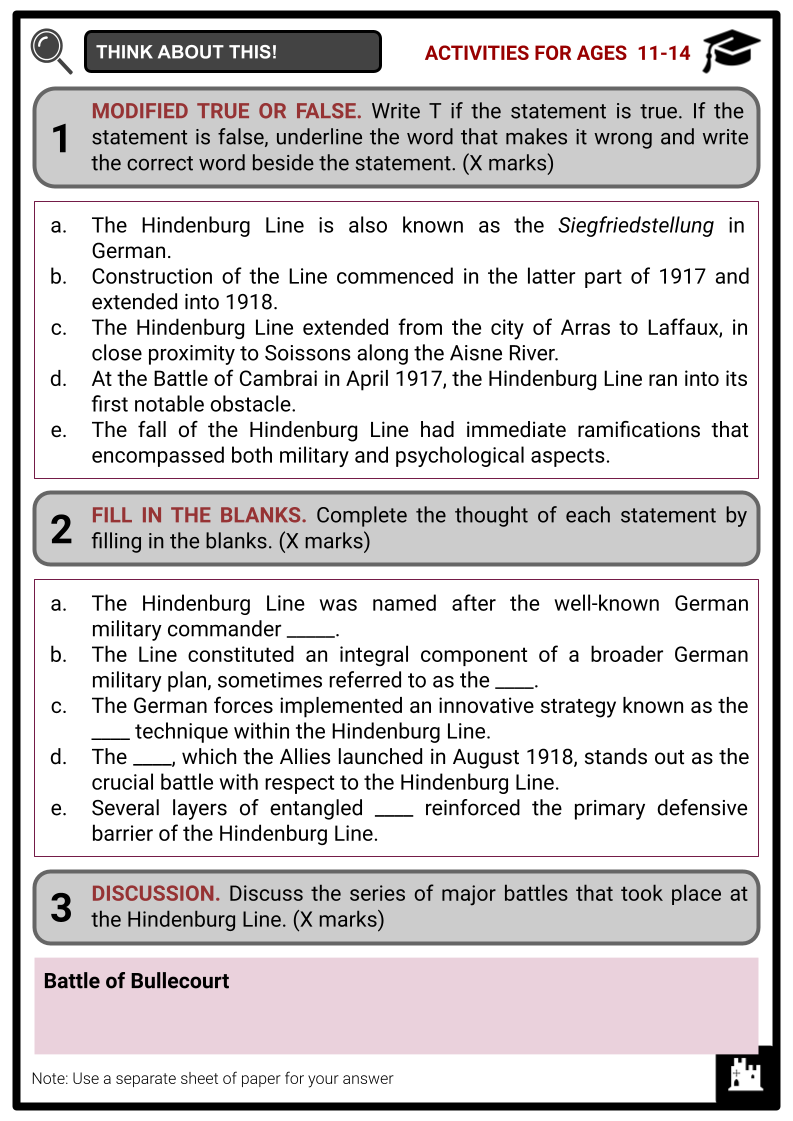
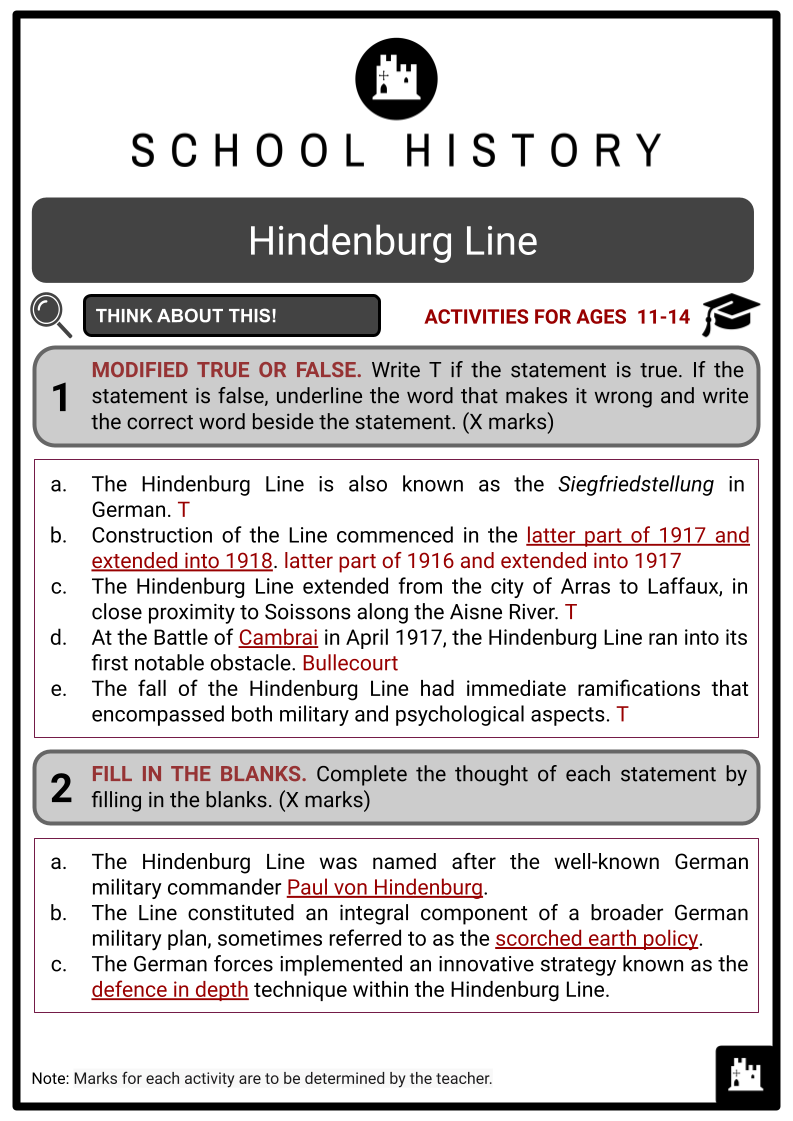
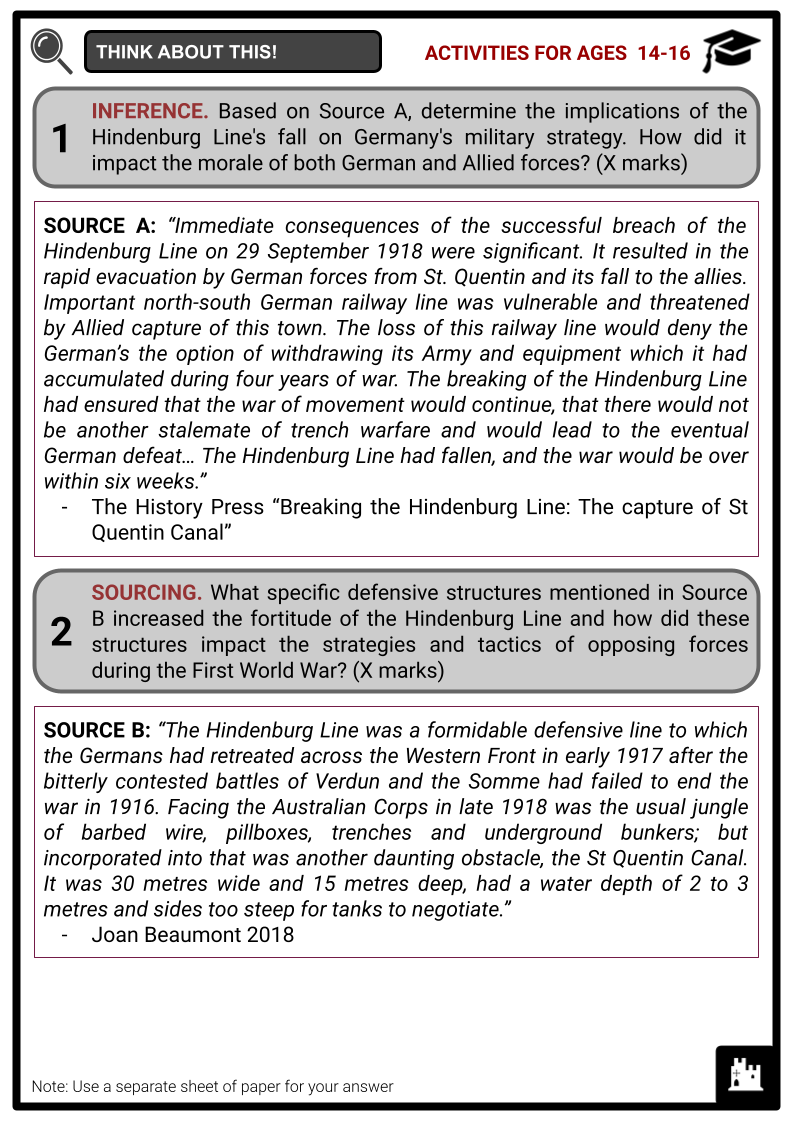
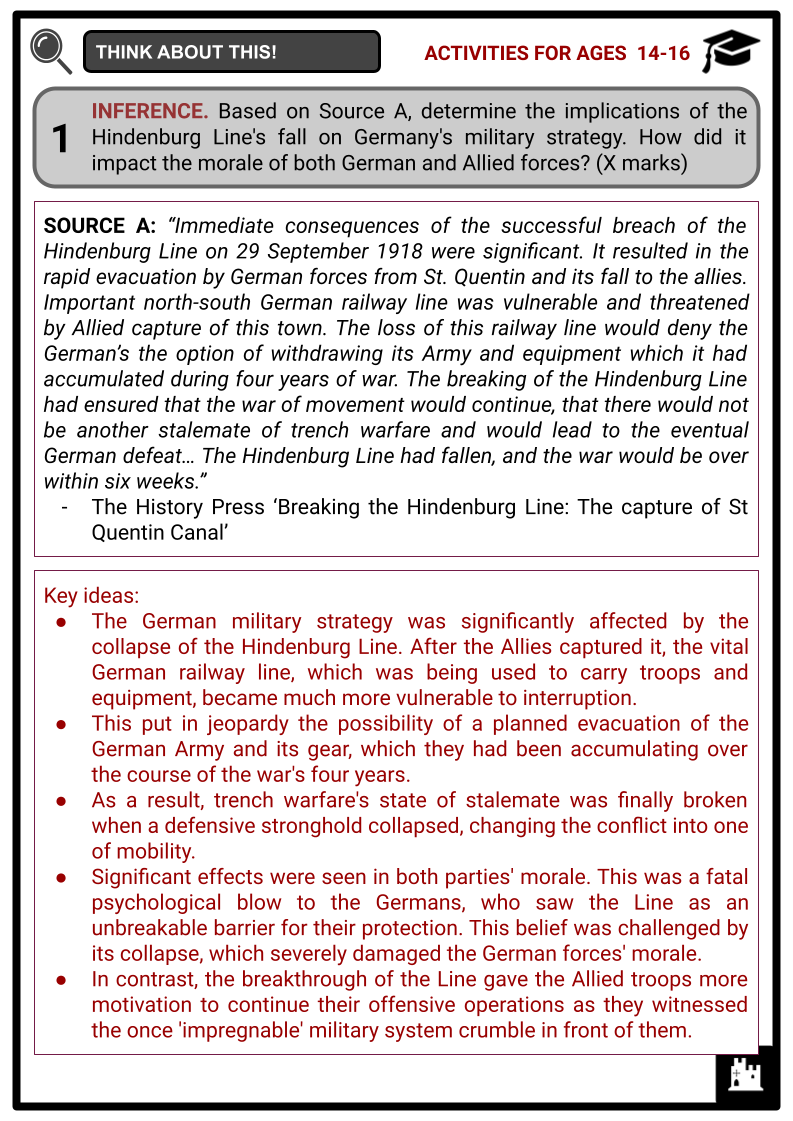
Summary
- Historical Context
- Paul von Hindenburg and the Hindenburg Line
- Construction and Design
- Strategic Importance during the First World War
- Major Battles at the Hindenburg Line
- Fall and its Implications
Key Facts And Information
Let’s know more about the Hindenburg Line!
The Hindenburg Line, also known as the Siegfriedstellung in German, was a comprehensive network of defensive fortifications constructed in the northeastern region of France during the First World War. The Line, which was named after the German Field Marshal Paul von Hindenburg, played a crucial role in the fight. The inclusion of wide trenches, fortified bunkers and intricate wire entanglements improved the Line's defensive infrastructure, enhancing its reputation as a formidable fortification of its time. The Hindenburg Line exerted a significant influence on the outcome of major battles throughout the years 1917 and 1918, and its eventual breach by Allied troops proved to be a pivotal element in precipitating the conclusion of the war.
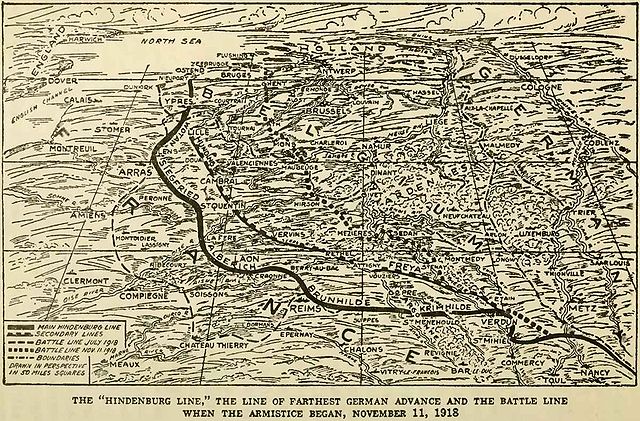
Historical Context
- The positioning of the Hindenburg Line was strategically determined in response to the unique demands of the First World War, a battle characterised by the use of trench warfare and defensive structures. Before the commencement of the war, military encounters were often described by a dynamic and fluid nature, characterised by ongoing mobility and active participation.
- However, the advent of sophisticated technology such as machine guns and artillery necessitated a transition towards a practical strategy in military endeavours, leading to the development of elaborate systems of trenches as a means of defence.
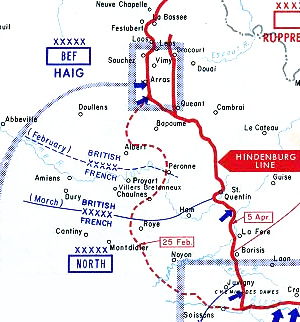
- The Hindenburg Line was named after the well-known German military commander, Field Marshal Paul von Hindenburg. Construction commenced in the latter part of 1916 and extended into 1917, predominantly conducted covertly in order to evade detection by the Allied forces.
- The Line constituted an integral component of a broader German military plan, sometimes referred to as the 'scorched earth policy'. This strategy involved the deliberate destruction and devastation of the French countryside by the retreating German forces, with the aim of impeding the progress of the advancing Allied armies. Therefore, apart from its defensive function, the Line was designed to serve the wider tactical and strategic goals of the German war campaign.
- Nevertheless, the strategy of prioritising defence in combat, which ultimately resulted in the establishment of the Hindenburg Line, proved to be unsustainable over an extended period of time. The fall of the Line in 1918 marked a turning point towards war tactics that would become more mobile in the years that followed.
Paul von Hindenburg and the Hindenburg Line
- Paul von Hindenburg, a prominent figure in German history, was born in 1847. He gained recognition and influence as a military and political leader during the course of the First World War. The establishment of the Hindenburg Line, which was named in his honour, represented a fundamental aspect of his strategic methodology during the war.
- Hindenburg spent a considerable amount of his early career serving in the German Army, where he was praised and appreciated for his extraordinary strategic intelligence. In 1916, he assumed the position of Chief of the German General Staff, acquiring substantial authority in shaping Germany's military endeavours during the war.
- Hindenburg, in conjunction with his close collaborator Erich Ludendorff, implemented a strategy focused on defensive warfare. In light of Germany's depleting resources and the imperative to safeguard its territorial integrity, Hindenburg put out a proposal for the establishment of a sequence of fortified defensive structures, subsequently referred to as the Hindenburg Line.
- The construction of this Line was strategically planned to serve as a fortified position where the German forces could tactically withdraw and effectively maintain control over the Western Front for an extended period of time.
- The Hindenburg Line initially saw a lot of use from the Allies, but as a result of its connection to Hindenburg, it gained symbolic significance. This correlation between the Line and Hindenburg elevated the belief that the Line was almost unbeatable, significantly bolstering the spirits of the German soldiers.
Construction and Design
- The Hindenburg Line extended from the city of Arras to Laffaux, in close proximity to Soissons along the Aisne River. Its construction commenced in the latter part of 1916 as a direct reaction to the advancements in technology and strategies witnessed during the course of the First World War.
- The Line was strategically developed as a means to impede the progress of Allied forces while using limited German resources. This defensive structure played a significant role within the broader context of Germany's war policy, reflecting a strategic shift in their approach.
- The Hindenburg Line can be described as a complex network of defensive structures from a design standpoint. It can be described as a series of hardened concrete bunkers and tunnels that were carefully incorporated into the surrounding topography. The implementation of bunkers was used as a method of safeguarding against artillery attacks, whereas the establishment of tunnels facilitated safe and efficient movement for military personnel.
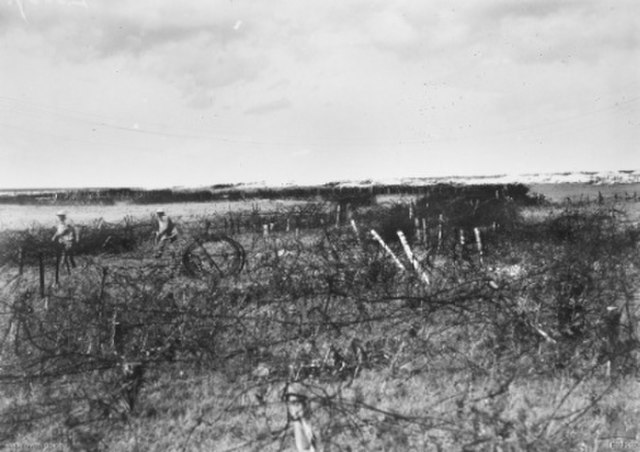
- Huge trench systems, frequently arranged on several tiers, encircled the concrete bunkers. The trenches had considerable depth and meticulous construction, serving as strategic locations for both protection and advantageous fire capabilities.
- Moreover, the trenches were frequently constructed in a zigzag pattern, impeding adversaries from establishing a direct and unobstructed firing trajectory along the trench.
- Several layers of entangled barbed wire reinforced the primary defensive barrier. The use of barbed wire in warfare served a dual purpose, functioning as both a physical deterrent and a disrupting element. Its presence effectively impeded the progress of enemy forces while also directing their movement towards predetermined locations that were subjected to concentrated German gunfire.
- In addition, the German forces implemented an innovative strategy known as the 'defence in depth' technique within the Hindenburg Line. Instead of being composed of a singular line of trenches, the Hindenburg Line was created with many lines of defence, deliberately designed to hinder the advancement of an offensive and afford German forces the opportunity to initiate a counter-attack.
- The building and design of the Hindenburg Line represented a noteworthy example of a well-executed military plan, showcasing the extraordinary ability of German engineers and tactical resourcefulness in skillfully handling the challenges posed by the First World War. The memory of the battle demonstrated an impressive degree of complexity and persistence, illustrative of the defensive strategies that were commonly employed in warfare during that specific era.
Strategic Importance during the First World War
- The Germans' implementation of the Line gave them a tactical edge that allowed them to start a protracted conflict that required their enemies to engage in hard, resource-consuming fighting. The planned fortifications on a restricted area of the Western Front perfectly exemplified the German forces' strategic adaptability and flexibility.
- The execution of this tactical decision made it easier for their armed troops to be moved to other strategically significant battlegrounds. The tactical operation demonstrated the Germans' skill at allocating resources and protecting important military assets.
- Furthermore, the implementation of the 'defence in depth' strategy led to a scenario in which the swift progress of the Allies was impeded, even when certain sections of the front were effectively breached. Nevertheless, the Allied forces encountered a series of successive defensive positions, affording German soldiers the opportunity to initiate counter-attacks.
- In essence, the Line played a key psychological role, being perceived as impregnable against German military advances. The formidable appearance of the structure served as a discouraging symbol for the Allied forces and enhanced the morale of the German men.
- The enduring strategic importance of the Hindenburg Line remains undisputed, notwithstanding its eventual collapse in 1918. The Line's design, defensive capabilities and strategic consequences were of utmost importance to the German military effort, hence influencing important aspects of warfare during the First World War.
Major Battles at the Hindenburg Line
- At the Battle of Bullecourt in April 1917, the Hindenburg Line ran into its first notable obstacle. Despite incurring significant fatalities, the military offensive conducted by British and Australian forces proved unsuccessful in capturing the Line.
- Nevertheless, this incident exposed the weaknesses in the Line's purportedly impenetrable defences, paving the way for forthcoming attacks.
- A new era in military operations began when the British used tanks at the Battle of Cambrai in November 1917. The battle showcased the capacity of armoured vehicles to penetrate the defensive barriers of the Line, but with minimal immediate advancements. The use of technological advancements in these military engagements played a pivotal role in influencing subsequent tactics and strategies employed in warfare.
- In 1918, the German forces launched their final major offensive, known as the Second Battle of the Somme and the Battle of Saint-Quentin, which resulted in a temporary retreat of the Allied forces. Nevertheless, the German lines were overextended as a result, rendering them susceptible and thereby establishing the groundwork for the subsequent important combat.
- The Hundred Days Offensive, which the Allies launched in August 1918, stands out as the crucial battle with respect to the Hindenburg Line. The breach of the Line occurred during the Battle of St Quentin Canal in September 1918, mostly attributed to an unexpected offensive launched by the Allied forces.
- This coalition consisted of the British, French and American armies, as well as Australian and Canadian troops. This event signified the commencement of the decline of the German forces during the First World War.
- The battles that took place on the Hindenburg Line were significant, serving as notable demonstrations of the progressing tactics and advancements in technology during the course of the war. These battles demonstrated the Line's critical role in the war and the significant effort required to overcome its formidable defences.
Fall and its Implications
- The successful breach of the Hindenburg Line at the Battle of St Quentin Canal, which took place as part of the broader Hundred Days Offensive, is commonly perceived as the pivotal event that marked the point at which Allied triumph became virtually certain.
- The breach signified Germany's inability to maintain a defensive line, and, as a result, the Allied forces gained the upper hand in the balance of power. The fall had immediate ramifications that encompassed both military and psychological aspects.
- From a military standpoint, this development facilitated the advancement of Allied forces into countries under German occupation, effectively leveraging their numerical and resource advantages. Moreover, due to the inability of the German forces to construct an additional comprehensive defensive barrier, the equilibrium of strategic positioning was disrupted.
- From a psychological standpoint, it may be argued that the occurrence of the fall had a significant impact on the morale of both parties involved. The successful breach of the Line by the Allies significantly elevated their morale, reinforced their determination, and instilled them with the necessary confidence to forward their offensive operations.
- In contrast, it might be argued that the German forces experienced a notable decline in morale as a result of the fall. The Line was widely interpreted as a symbol of the German forces' alleged invulnerability. Its eventual collapse severely damaged this image and sapped the men's confidence and morale.
- The fall of the Line also expedited the conclusion of the conflict. Acknowledging the futility of impeding the advance of the Allies, the German High Command promptly initiated efforts to negotiate an armistice shortly after the breach of the Line. In November 1918, a formal armistice was signed, signifying the culmination of the First World War.
- In retrospect, the fall of the Hindenburg Line was pivotal to the course of the First World War. Not only did it serve as the catalyst for the end of the war, but it also impacted the negotiations at the subsequent peace conference and shaped the post-war world order.
Image Sources
- https://upload.wikimedia.org/wikipedia/commons/thumb/e/ea/Hindenburg_Line_Map_SGW_Vol_VIII.jpeg/640px-Hindenburg_Line_Map_SGW_Vol_VIII.jpeg
- https://upload.wikimedia.org/wikipedia/commons/1/1e/Withdrawal_to_Hindenburg_Line_diagram_300px.jpg
- https://upload.wikimedia.org/wikipedia/commons/thumb/d/db/Hindenburg_Line_Bellenglise_AWM_E03367.jpeg/640px-Hindenburg_Line_Bellenglise_AWM_E03367.jpeg
Frequently Asked Questions
- What was the Hindenburg Line?
The Hindenburg Line was a heavily fortified German defensive position on the Western Front during the First World War.
- Where was the Hindenburg Line located?
The Hindenburg Line ran several kilometres behind the existing German front line in northeastern France, stretching from Lens to beyond Verdun.
- What was the purpose of the Hindenburg Line?
The Hindenburg Line was designed to be a formidable defensive position, incorporating deep trenches, concrete bunkers, barbed wire, and other obstacles to impede any Allied advances.
